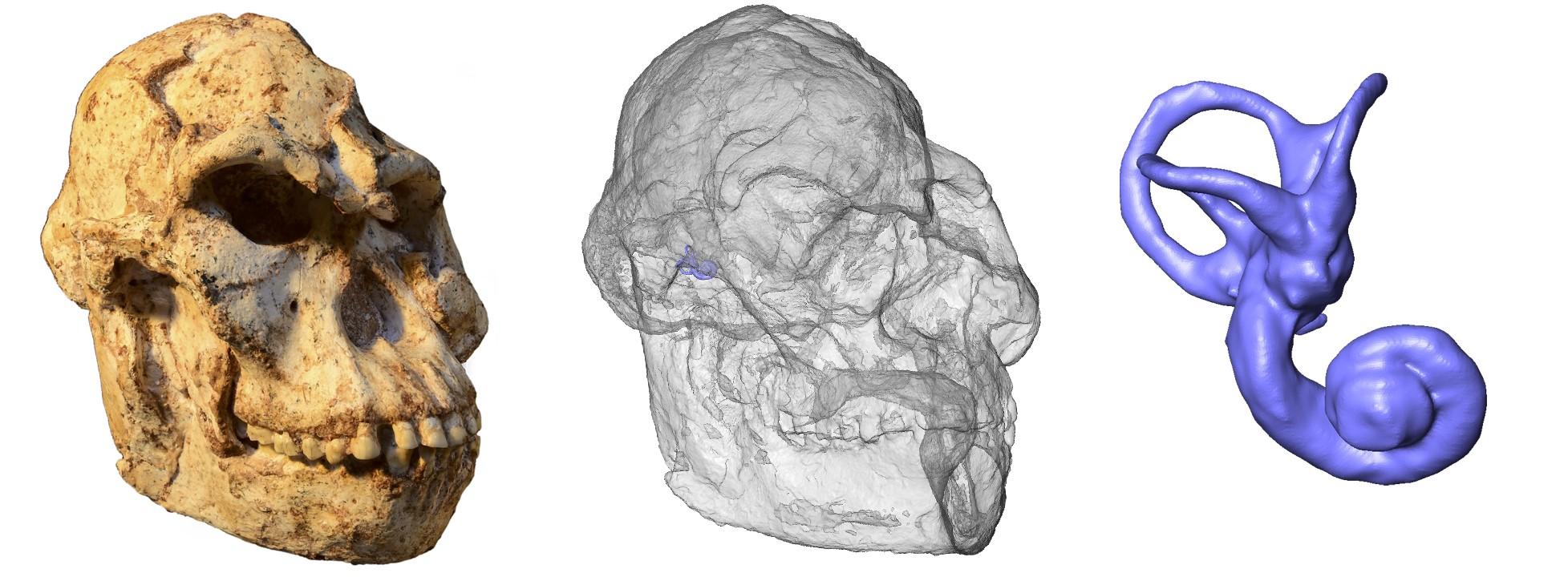
Despite recent progress in molecular analyses and the constant increase of the hominin remains in the fossil record, the chronological, geographical and evolutionary context of the emergence of the genus Homo remains largely debated. More importantly, the identity of our direct ancestors and assessment of the adaptations characterizing our genus remain unclear. Because of the density and the unique chronological context of the fossil material (i.e., covering the last three and half million years of human evolution), the Plio-Pleistocene South African paleontological sites located in the “Cradle of Humankind” play a major role for addressing these fundamental questions. In particular, the expanding hominin fossil assemblage from Sterkfontein is critical to the exploration of the current conflicting scenarios about early hominin taxonomic diversity and the emergence of key derived features. As for instance, the discovery of a nearly complete skeleton of Australopithecus dated at 3.67 million years (i.e., ‘Little Foot’) at Sterkfontein represents a unique opportunity to study the cranial and postcranial features in a single individual.
Since 2017, we have been using imaging techniques (such as X-ray lab microCT and synchrotron radiation) to non-invasively investigate fossil hominin remains from Sterkfontein and other southern African hominin-bearing sites (e.g., Drimolen, Makapansgat, Swartkrans). The aims of this project are to (i) evaluate hominin taxic diversity during the Plio-Pleistocene in southern Africa using diagnostic features, (ii) reconstruct the locomotor behaviour of fossil hominins, which includes assessing the arboreal and terrestrial components of the Australopithecus locomotor repertoire, and (iii) comparatively study the brain shape and organization of Australopithecus. This project has been funded by the Centre of Excellence in Palaeosciences, the Claude Leon Foundation, , the French Institute for South Africa, the National Research Foundation of South Africa and the University of the Witwatersrand.
Key-publications:
Beaudet A. et al. (2018) Cranial vault thickness variation and inner structural organization in the StW 578 hominin cranium from Jacovec Cavern, South Africa. Journal of Human Evolution 121: 204-220.
Beaudet A. et al. (2019) The bony labyrinth of StW 573 (“Little Foot”): implications for hominin evolution and paleobiology. Journal of Human Evolution 127: 67-80 (link).
Beaudet A. et al. (2019) The endocast of StW 573 (“Little Foot”) and hominin brain evolution. Journal of Human Evolution 126: 112-123.
Beaudet A. et al. (2020) The atlas of StW 573 and the late emergence of human-like head mobility and brain metabolism. Scientific Reports 10: 4285.
Beaudet A. et al. (2021) Preliminary paleohistological observations of the StW 573 (‘Little Foot’) skull. eLife 10: e64804.
Sterkfontein Research Team Leader:
Dominic Stratford
Sterkfontein Research Team Members:
Ronald Clarke
Jason Heaton
Travis Pickering
Centre of Excellence in Palaeosciences
The Claude Leon Foundation
The French Institute for South Africa
The National Research Foundation of South Africa
The University of the Witwatersrand


